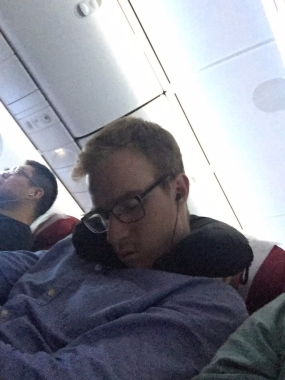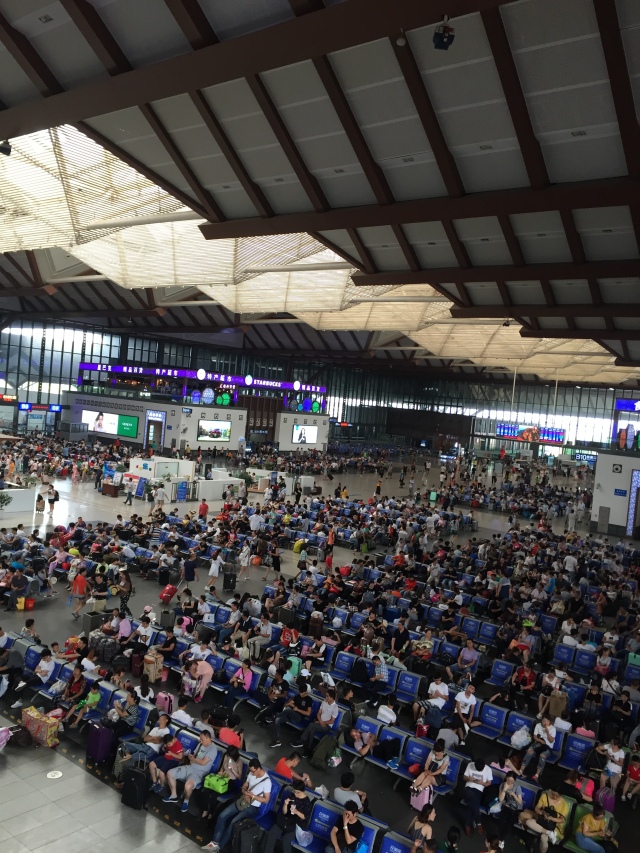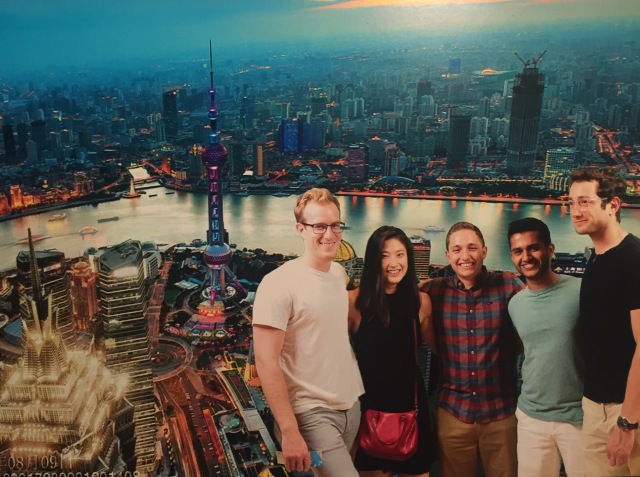This morning after breakfast, we met with our new translator (Yuan “Lisa” Xi) in the hotel lobby. She was overall very helpful this day, especially because she was not familiar with any of the terminology we have been using before this weekend! We called a taxi to the 1st Affiliated Hospital of Guangzhou Medical University, another tier 3 hospital specializing in pulmonary hypertension. This time, hailing a taxi was bit difficult because many people here speak Cantonese (another dialect of Chinese), whereas I speak Mandarin. Cantonese quite literally sounds like jibberish to me (and is probably similar to what other people hear when they hear me speak Mandarin).

At the front entrance, we were greeted by Dr. Su, a PhD student who is working with the clinical staff and just obtained his 5-year bachelor degree. We were given a tour around the bronchoscopy suites (they accessed the nasal cavity instead of the mouth, which was interesting to see). We then sat down with Dr. Li, one of the best pulmonologists in China. His reactions were similar to those of the physicians we met in Nanjing and Beijing. He was extremely intrigued by the idea and suggested that we also talk to Dr. Hong, an interventional cardiologist who also works with him in treating and diagnosing pulmonary hypertension. Similar to the hospital in Beijing, a multidisciplinary team exists, making the cross-cultural nature of this project less of an issue. During our meeting, there was a photographer who came in with a large camera taking pictures of us. He definitely made us feel super important!
Afterwards, another one of Dr. Su’s colleagues, Dr. Zhou, who was doing his residency (and choosing exactly which subset of pulmonology to specialize in), joined us while we waited for Dr. Hong to finish his procedures. We chatted for about an hour or so to gain insights from a more junior level doctor, and this helped in later conversations with Dr. Hong as well. We then all went to lunch to eat some local Guangzhou food. Dr. Hong was very welcoming and insisted that our plates were full, all of the time (sometimes even taking the liberty of placing food on our plates himself!). We then informally discussed his concerns with the procedure over lunch, and everyone was very involved in the conversation. He also expressed interest in continuing communication about the project, and that the 1st Affiliated Hospital of Guangzhou Medical University should be one of the first hospitals to adopt this novel technology, after proving its safety and efficacy.
Wade, Eddie, and Andrew had earlier flights back to the U.S., so at that point it was just Shash and I. We then made our way back to our hotel for a nice nap. We are now relaxing at our hotel for one last night before flying out to Dali in Yunnan to take a slight detour and regain inner peace and understanding by visiting a temple and learning Kung Fu from monks (quite a change from the city life we’ve experienced the past couple of weeks!).
Overall, the group has been extremely grateful for this opportunity. While China was definitely a culture shock in many aspects, we gained valuable insights from this trip and hope to return in December with a working prototype and more specific patient target and value proposition for the physicians. We look forward to compiling all of the information we’ve learned, extracting unmet needs and major themes, keeping in touch with the physicians/industry officials we met in the past couple of weeks, and moving forward with the project throughout the semester.
We would like to acknowledge Dr. Jie Wang, the CEO of SyMap for organizing this entire trip, support from the CBID Admin back at Hopkins (Dr. Soumyadipta Acharya, Dr. Youseph Yazdi, and Aditya Polsani), our translators for this trip (Ning “Angela” Yan and Yuan “Lisa” Xi), and our mentors at Coridea (Howard Levin, Mark Gelfand, Adam Rosenwach, Zoar Engelman, and Anisha Bapna).
































 Afterwards, we explored yet another famous shopping street (although smaller than Pingjiang Lu), Shan Tang Street. This street also lined a canal and was filled with shops with various trinkets.
Afterwards, we explored yet another famous shopping street (although smaller than Pingjiang Lu), Shan Tang Street. This street also lined a canal and was filled with shops with various trinkets.























